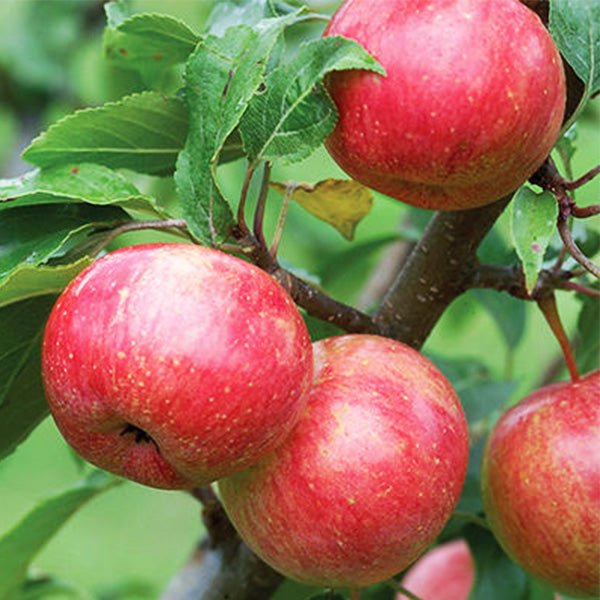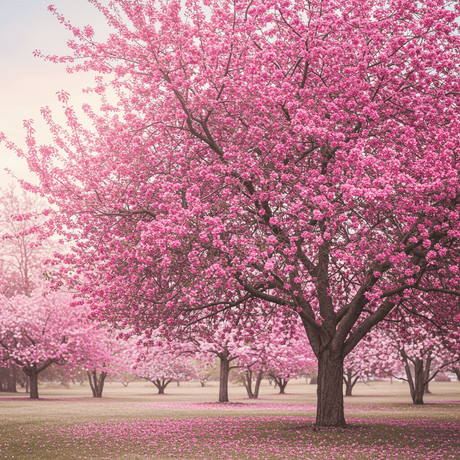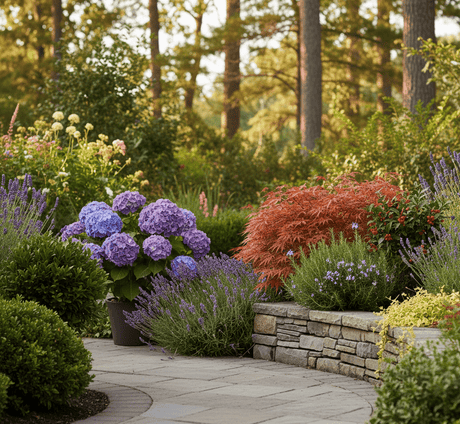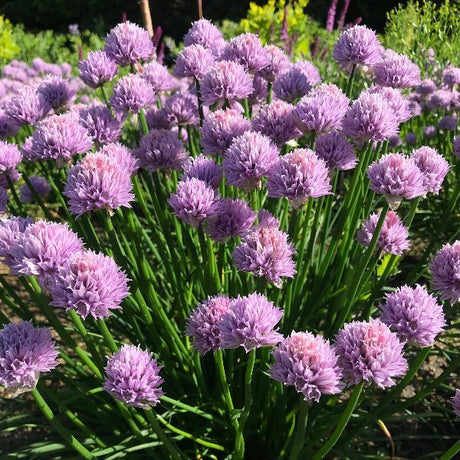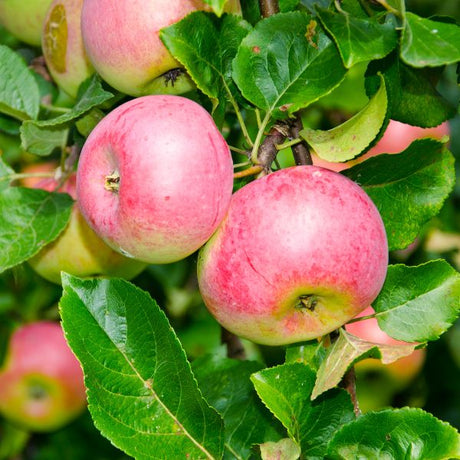Chestnut Crabapple Tree
Malus 'Chestnut'
Plant Sentry™
Plant Sentry™

Plant Sentry™ Protected
Your order is protected by our compliance system that:
- Prevents restricted plants from shipping to your state
- Ensures plants meet your state's agricultural requirements
- Protects gardens from invasive pests and diseases
Delivery and Shipping
Delivery and Shipping
Delivery and Shipping
Fast, Safe Plant Delivery
Ships in 3-4 business days • Tracking provided • Weather protected
| Under $50 | $9.99 |
| $50 - $99.99 | $14.99 |
| $100 - $149.99 | $16.99 |
| $150 - $198.99 | $24.99 |
| $199+ | FREE |
✓ Zone-specific timing • ✓ Professional packaging • ✓ Health guarantee
Understanding Plant Options
Nature Hills offers plants in two main formats:
- Container Plants: Grown in pots with soil, sized by container volume and plant age
- Bare Root Plants: Dormant plants without soil, sized by height measurements
Container Plant Sizes
Container sizes indicate plant age and growing capacity rather than liquid volume equivalents. Our containers follow industry-standard nursery "trade gallon" specifications, which differ from standard liquid gallon measurements.
Young Plants (6 months to 18 months old)
| Container Size | Actual Volume | Metric Equivalent |
|---|---|---|
| 2" x 2" x 3" | 0.18 - 0.21 dry quarts | 0.20 - 0.23 dry liters |
| 4" Container | 0.31 - 0.87 dry quarts | 0.35 - 0.96 dry liters |
| 4.5" Container | 0.65 dry quarts | 0.72 dry liters |
| 6" Container | 1.4 dry quarts | 1.59 dry liters |
| 1 Quart | 1 dry quart | 1.1 dry liters |
| 5.5" Container | 1.89 dry quarts | 2.08 dry liters |
Established Plants (18 months to 2.5 years old)
| Container Size | Actual Volume | Metric Equivalent |
|---|---|---|
| 2 Quart | 2 dry quarts | 2.2 dry liters |
| #1 Container | 2.26 - 3.73 dry quarts | 2.49 - 4.11 dry liters |
| 5" x 5" x 12" | 3.5 - 4.3 dry quarts | 3.85 - 4.74 dry liters |
Mature Plants (2-4 years old)
| Container Size | Actual Volume | Metric Equivalent |
|---|---|---|
| #2 Container | 1.19 - 1.76 dry gallons | 5.24 - 7.75 dry liters |
| #3 Container | 2.15 - 2.76 dry gallons | 8.14 - 12.16 dry liters |
Large Plants (3-5 years old)
| Container Size | Actual Volume | Metric Equivalent |
|---|---|---|
| #5 Container | 2.92 - 4.62 dry gallons | 12.86 - 20.35 dry liters |
| #6 Container | 5.25 - 6.01 dry gallons | 23.12 - 26.42 dry liters |
| #7 Container | 5.98 - 6.53 dry gallons | 26.34 - 28.76 dry liters |
Bare Root Plants
Bare root plants are sold by height from the root system to the top of the plant. Plants may exceed minimum height requirements.
Common Sizes:
- Trees: 1 foot, 2 feet, 3 feet, 4 feet, 5 feet, 6 feet
- Shrubs & Perennials: 1 foot, 18 inches, 2 feet
Important Notes
Container Volume Specifications
- Trade Gallon Standard: Our containers follow industry-standard "trade gallon" specifications established by the American National Standards Institute (ANSI Z60.1) for nursery stock
- Volume Variations: Actual soil volume may vary due to plant root systems and growing medium settlement
- Age Indicators: Container size primarily indicates plant age and maturity rather than liquid volume equivalents
Growing Conditions
- Plant size can vary based on variety and growing conditions
- Container size helps indicate plant maturity and establishment level
- Larger containers generally mean more established root systems and faster landscape establishment
Seasonal Availability
- Bare root plants are available seasonally when dormant
- Container plants are available throughout the growing season
- Specific varieties may have limited availability in certain sizes
Questions?
For questions about specific plant sizes or availability, please contact our plant experts who can help you choose the right size for your landscape needs.

Plant Sentry™ Protected
Your order is protected by our compliance system that:
- Prevents restricted plants from shipping to your state
- Ensures plants meet your state's agricultural requirements
- Protects gardens from invasive pests and diseases
Plant Profile & Growing Essentials
Cold hardy, Flowering, Edible, Ornamental Berries/Fruit, Attracts pollinators, and Fall Color/Interest
Specifications
Specifications
-
Botanical Name
-
Height
-
Width
-
Growing Zones
-
Sunlight
-
Growth RateModerate
-
Flower Color
-
Leaf Color
-
Fall Color
-
Pollinator FriendlyYes
-
Pollinator Required
-
Bloom PeriodEarly Spring, Late Spring
-
FragrantYes
Planting & Care Instructions
Planting & Care Instructions
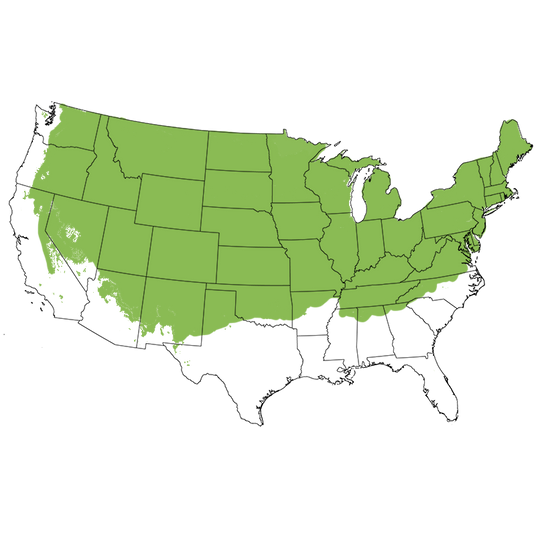
Growing Zones 2-7
When you think of Crabapples, you likely picture tiny, rock-hard, bitter fruit that will turn your mouth inside-out and cause everlasting lock-jaw. The Chestnut Crabapple Tree (Malus 'Chestnut') is ready to change your mind!
The Chestnut Crabapple Tree has high levels of sugar for an extremely sweet bite. With overtones of honey, pear, orange, and vanilla, you will wonder if what you grew is a Crabapple tree. Don't worry - It is! Some even say that the Chestnut Crabapple tastes like, well... Chestnuts!
The white flowers appear in early spring before starting to ripen into larger-than-usual round fruit! Chestnut Crabapples are slightly yellow to soft red fruit that can be munched on while you work in the yard or cooked into jams, pies, or preserves. Crabapples have higher pectin and make fantastic jams and jellies! You can even make tasty juices!
While these Crabapples barely grow larger than two inches in diameter, they offer just as much flavor as some of the best Apple varieties! Their petite size makes them perfect for the kids or as a tabletop bowl of adorable Apples in early September as they ripen and become ready to pick!
Planting and Application:
Not only does the Chestnut Crabapple Tree produce great fruit on its own and look pretty each spring when it explodes into full bloom, but it helps your Apple trees produce more fruit than you can imagine. Pair yours with a Honeycrisp, Cortland, or Liberty for a bumper crop on all trees involved! Create groupings or linear orchards by way of hedgerows that screen and divide your property while feeding you and your wildlife!
Treat yourself to the best apples by planting your Chestnut Crabapple with several of these happy pollinator varieties. Don't have a lot of yards to give up? Put two trees in one planting site by using high-density techniques. It makes a great addition to the front, backyard, or other Apple varieties grouped on the side of your house for pretty edible landscaping.
You may have seen pectin, a beneficial soluble fiber used as a gelling agent to set any kind of fruit jelly or jam, as a supplement at the health food store to help maintain normal blood sugar levels! The flowers attract a wide variety of pollinators like bees and butterflies, and the fruit attracts wildlife and songbirds!
- Yellow-to-Soft Red Two-Inch Super Sweet Crabapples
- A Wonderful Pollination Partner Tree!
- Tall & Narrow Form & Mid-Season Harvest
- White Fragrant Flowers Attract Pollinators
- Fantastic Pollinator Variety
- Lovely Ornamental & Versatile Landscaping Tree
#ProPlantTips for Care:
Growing a Crabapple tree is easy when proper soil, good drainage, attention to moisture, and regular fertility are maintained. The Chestnut Crabapple loves full sun and well-drained soil. Water this tree regularly like any other plant. This tree should be planted in well-drained soil. If the soil near the base of the tree is moist, then this tree is happy! If it is dry, give it a good soak.
Planting Apple Trees is easy! Dig a large hole only as deep as needed to accommodate the bareroot or container root ball, and twice as wide. Add Nature Hills Root Booster to speed root establishment. Top off with a 3-4 inch thick layer of arborist mulch. Consider staking your tree to keep its trunk growing straight for the first year, so pick up a Tree Support Stake Kit. Once established, a fertilizer routine may be beneficial. We do offer some excellent slow-release organic options, applied according to the package directions. Prune and trim Apple trees while dormant, in late winter or early spring, before you see new growth.
- Cold-Hardy Down to Zone 2!
- Full Sun For The Most Fruit
- Well-Drained Moist & Enriched Soil
- Thin Fruit During Heavy Crops
- ~800 Chill Hours
- Easy to Grow & Low-Maintenance
A unicorn of the Crabapple world: The sweet Chestnut Crabapple Tree! If you need a great pollinator, why not choose one that comes with its own tasty crop? The Chestnut Crabapple earns its spot in your garden with sweet Apples, high pollination abilities, and lovely smaller-tree form. Order yours today at Nature Hills!

